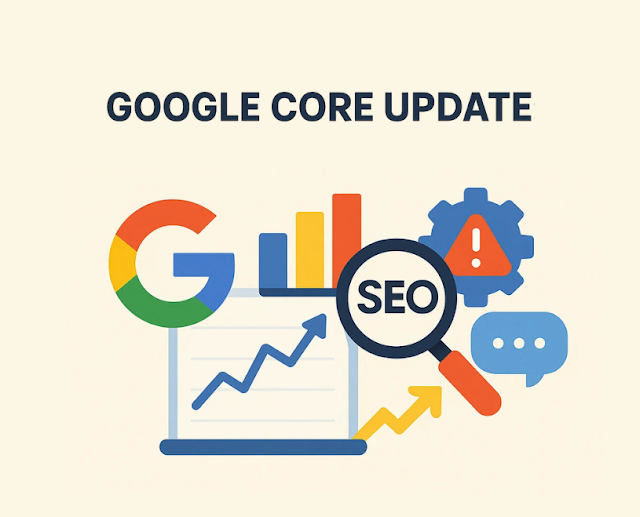Google’s June 2025 Core Update has shaken up the SEO landscape once again — and this one hit harder than most. From sudden ranking drops to dramatic traffic changes, many website owners are left wondering what went wrong and how to bounce back.
In this blog post, we’ll break down:
-
What the June 2025 Google update included
-
How it impacted SEO across industries
-
Common issues websites faced
-
Actionable fixes to recover and future-proof your rankings
What Was in the June 2025 Google Core Update?
The June 2025 update focused heavily on improving content quality, user experience (UX), and trust signals. Unlike minor tweaks, this was a broad core algorithm update that affected sites globally.
Key Focus Areas:
-
Deeper content quality checks using AI and natural language understanding
-
E-E-A-T (Experience, Expertise, Authoritativeness, Trustworthiness) evaluation elevated
-
Helpful Content Signals updated to reward first-hand knowledge
-
Page experience (load speed, mobile usability, interactivity) mattered more than ever
-
AI-generated content audits became stricter
Major SEO Impacts Across Industries
Many sites — especially in niches like health, finance, tech reviews, and eCommerce — saw volatility. Here's a snapshot of what happened:
1. Affiliate & Review Sites
-
Heavily hit due to thin, AI-written content
-
Lacked real-world experience or product testing
-
Trust indicators like author bios and external validation were missing
2. Local Businesses
-
Some lost visibility due to outdated or inconsistent business information
-
Schema markup and NAP accuracy became crucial
3. News & Content Sites
-
Sites publishing high volumes of trending or AI-written content without fact-checking were demoted
-
First-hand journalism and experience were rewarded
Common Issues Found Post-Update
Based on industry analysis and SEO audits, here are the most common problems triggered by the June 2025 update:
-
Over-reliance on AI-generated content without human editing
-
Lack of clear author information or real-world experience
-
Slow mobile performance and bad UX design
-
High bounce rates, poor engagement metrics
-
Outdated or overly generic blog content
-
No structured data or schema implementation
Fixes and Recovery Strategies
If your site was affected, don’t panic. Recovery is possible — but it requires strategy, not shortcuts.
1. Audit and Enhance Content Quality
-
Update outdated blogs with fresh stats, insights, and examples
-
Use real data, case studies, or personal experiences
-
Add expert commentary or quotes when possible
-
Make sure every post has a purpose, solves a problem, or answers a user intent
2. Boost E-E-A-T Signals
-
Add detailed author bios with credentials and social proof
-
Include trust badges, real testimonials, and client case studies
-
Link out to credible sources and receive backlinks from authority sites
-
Get listed in relevant directories and Google’s Knowledge Panel (if possible)
3. Optimize UX and Core Web Vitals
-
Ensure fast load speeds across mobile and desktop
-
Simplify navigation and avoid intrusive popups
-
Use clean design with proper heading structure (H1-H3)
-
Add interactive elements: videos, FAQs, internal links, etc.
4. Avoid Overuse of AI Tools
-
AI tools can help, but human editing is now a must
-
Ensure tone, flow, and factual accuracy
-
Add depth and nuance that only real experience can offer
Future-Proofing: SEO Tips Beyond June 2025
-
Publish Original Research or First-Hand Experiences
-
Conduct Regular SEO Audits (technical + content + backlinks)
-
Stay Active on Google Search Console — monitor changes and alerts
-
Keep a Consistent Publishing Schedule with Fresh, Valuable Content
-
Diversify Traffic Sources — don't rely 100% on Google
-
Monitor Competitor Movements — what’s working for others post-update?
Final Thoughts
The June 2025 Google Core Update reminds us that SEO isn’t just about keywords or backlinks — it’s about real value. Google is continuously evolving to surface content that’s useful, trustworthy, and genuinely helpful to users.

Comments
Post a Comment